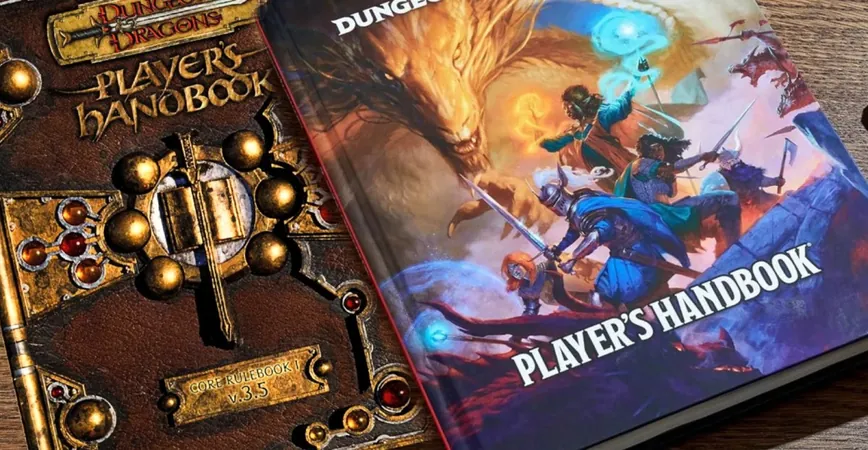
Why Playing D&D 3.5e Made Me Appreciate 5e More Than Ever
2025-07-18
Author: Olivia
Recently, I dove back into the world of Dungeons & Dragons through Neverwinter Nights 2: Enhanced Edition, a modern take on Obsidian Entertainment’s 2006 classic. While the updates left me wanting more, one glaring aspect struck me: just how convoluted character building was in D&D 3.5e, and not in a nostalgic way.
Many players still pine for 3.5e due to its extensive customization options. However, as I worked on my character builds, I realized the sheer elegance of D&D 5e's simplicity, introduced in 2014. Although I have my reservations about 5e's streamlined rules, especially regarding certain game elements, revisiting 3.5e’s character creation genuinely felt like a minefield.
Overwhelmed by Options
3.5e boasted an impressive array of classes and prestige classes—over 1,000 when you factor in all the supplemental materials. But these prestige classes weren’t the easy alternatives found in 5e; they demanded rigorous prerequisites. For instance, aspiring Arcane Tricksters needed a non-lawful alignment, multiple skills ranked up, and a slew of abilities before even considering the class. Forget to meet one requirement? You'd be stuck.
Simpler Choices, Smoother Gameplay
In contrast, 5e offers subclasses as a natural part of class progression that are chosen early on. While optimized builds still require strategy—like level dips for powerful features—building a character in 5e feels straightforward. The complexity of 3.5e resembled piecing together a jigsaw puzzle, where every detail had to align perfectly. That level of scrutiny can be appealing for some, but for me, 5e's system eased my return to the game.
Say Goodbye to Skill Ranks
One major relief was the abolishment of skill ranks. In 5e, proficiency bonuses and the associated ability scores determine a character’s skill effectiveness. This is a vast improvement over the ponderous skill point system of 3.5e, where you could waste hours filling out character sheets for aspects rarely used. This complexity overload not only hinders new players but can also lead to imbalances in gaming sessions.
Dungeon Masters often struggle to manage the overly optimized builds that 3.5e encourages. While min-maxing still exists in 5e, the streamlined design makes it easier to balance gameplay. If a player grows dissatisfied with their character in 5e, I can offer small tweaks or adjustments. In 3.5e, the only solid solution might be to end the character’s life and start anew—hardly ideal.
Finding Beauty in the Game
Dungeons & Dragons is ultimately a canvas for creativity, enabling players to craft their own epic stories. Many still cherish 3.5e, and older editions have their devoted followers who adore the game as Gary Gygax envisioned.
For me, however, while 5e isn't flawless, its simplified approach to character creation drew me back into the fold after the intricacies of 3.5e nearly chased me away. I’ve come to realize that I’m simply not wired for the jigsaw puzzle of complexity.









 Brasil (PT)
Brasil (PT)
 Canada (EN)
Canada (EN)
 Chile (ES)
Chile (ES)
 Česko (CS)
Česko (CS)
 대한민국 (KO)
대한민국 (KO)
 España (ES)
España (ES)
 France (FR)
France (FR)
 Hong Kong (EN)
Hong Kong (EN)
 Italia (IT)
Italia (IT)
 日本 (JA)
日本 (JA)
 Magyarország (HU)
Magyarország (HU)
 Norge (NO)
Norge (NO)
 Polska (PL)
Polska (PL)
 Schweiz (DE)
Schweiz (DE)
 Singapore (EN)
Singapore (EN)
 Sverige (SV)
Sverige (SV)
 Suomi (FI)
Suomi (FI)
 Türkiye (TR)
Türkiye (TR)
 الإمارات العربية المتحدة (AR)
الإمارات العربية المتحدة (AR)